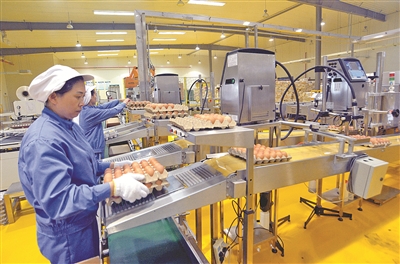Cixi delves into modern agriculture

Cixi industrial park strives to be a model in the world of modern agriculture and was recently elected as one of the first 11 national parks by the Ministry of Agriculture and the Ministry of Finance.
Founded in 2009, the industrial park received an initial investment of 5 billion yuan ($732 million). The park currently boasts 25 companies, 67 farmhouses, and 206 square-kilometer of planting areas.
Qi Yuerui, director of the management committee of the industrial park attributes the successful development of the park to several key aspects including the high integration of land resources, the large-scale production of grain, fruit and vegetables, the large-scale livestock breeding, and applying effective management systems.
Here we highlight some of the park's key features that help to elucidate how it became a nationally recognized.
Technology utilization
The industrial park uses technology to support supply-side reform in the agriculture sector. By using advanced equipment and intelligent production modes, the park has been able to increase not only its output but also the quality of the produce.
An example of the deep support for the park is evident in the project launched by Thai agri-food company CP Group. The Southeast Asian company currently operates the largest and most advanced chicken and egg production project in East China. It utilizes intelligent working mechanisms and is able to produce 700,000 eggs every day with the help of machines.

Workers of the CP Group collect eggs with the help of intelligent machines at the modern agriculture park in Cixi, Zhejiang province. [Photo/Ningbo Daily]
In addition to agreements with leading international companies, the industrial park has established partnerships with seven domestic universities and institutes such as Zhejiang University and Shanghai Jiaotong University. It encourages companies to seek technological support from prominent academic institutions.







